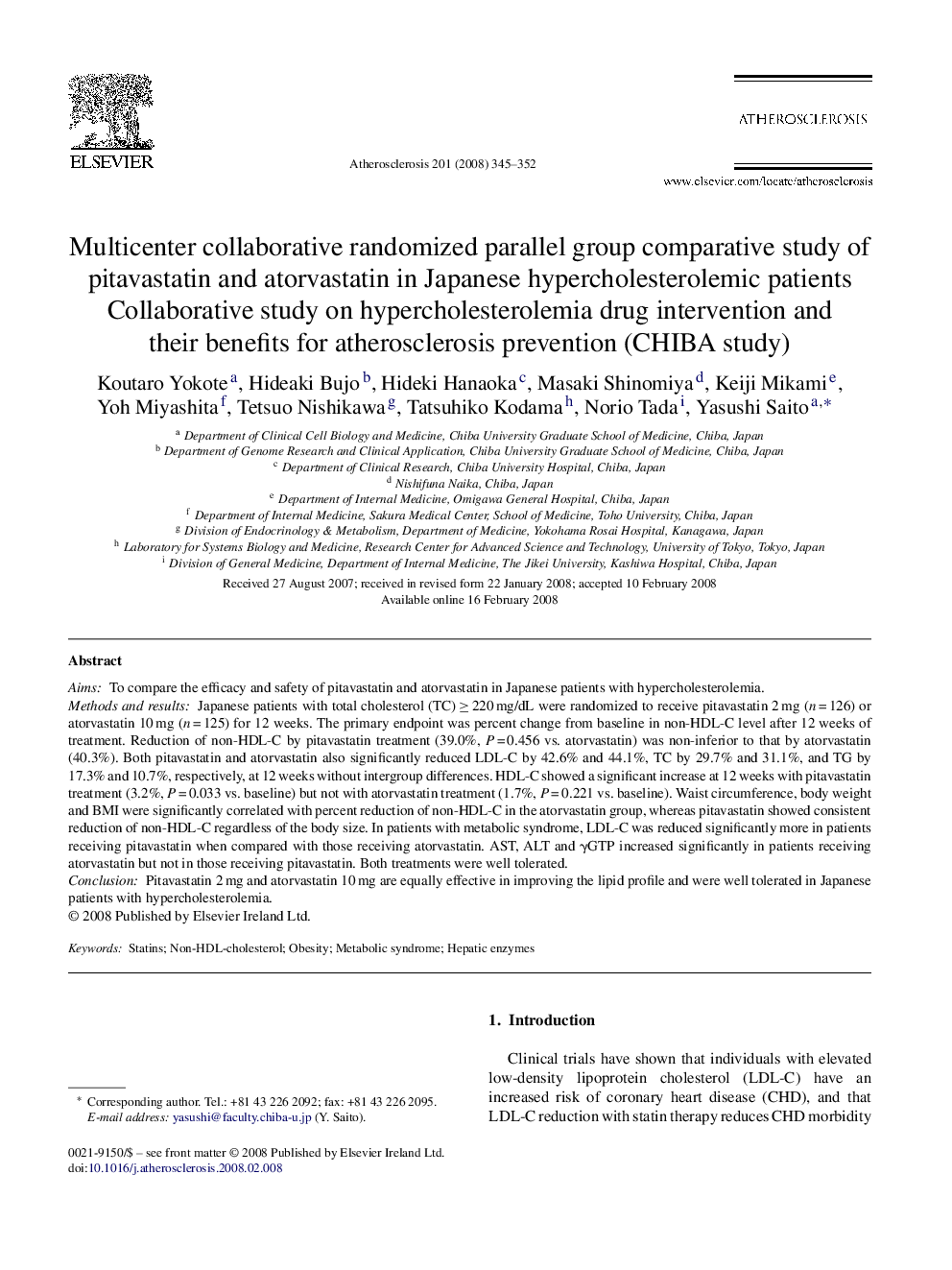| Article ID | Journal | Published Year | Pages | File Type |
|---|---|---|---|---|
| 2894320 | Atherosclerosis | 2008 | 8 Pages |
AimsTo compare the efficacy and safety of pitavastatin and atorvastatin in Japanese patients with hypercholesterolemia.Methods and resultsJapanese patients with total cholesterol (TC) ≥ 220 mg/dL were randomized to receive pitavastatin 2 mg (n = 126) or atorvastatin 10 mg (n = 125) for 12 weeks. The primary endpoint was percent change from baseline in non-HDL-C level after 12 weeks of treatment. Reduction of non-HDL-C by pitavastatin treatment (39.0%, P = 0.456 vs. atorvastatin) was non-inferior to that by atorvastatin (40.3%). Both pitavastatin and atorvastatin also significantly reduced LDL-C by 42.6% and 44.1%, TC by 29.7% and 31.1%, and TG by 17.3% and 10.7%, respectively, at 12 weeks without intergroup differences. HDL-C showed a significant increase at 12 weeks with pitavastatin treatment (3.2%, P = 0.033 vs. baseline) but not with atorvastatin treatment (1.7%, P = 0.221 vs. baseline). Waist circumference, body weight and BMI were significantly correlated with percent reduction of non-HDL-C in the atorvastatin group, whereas pitavastatin showed consistent reduction of non-HDL-C regardless of the body size. In patients with metabolic syndrome, LDL-C was reduced significantly more in patients receiving pitavastatin when compared with those receiving atorvastatin. AST, ALT and γGTP increased significantly in patients receiving atorvastatin but not in those receiving pitavastatin. Both treatments were well tolerated.ConclusionPitavastatin 2 mg and atorvastatin 10 mg are equally effective in improving the lipid profile and were well tolerated in Japanese patients with hypercholesterolemia.
